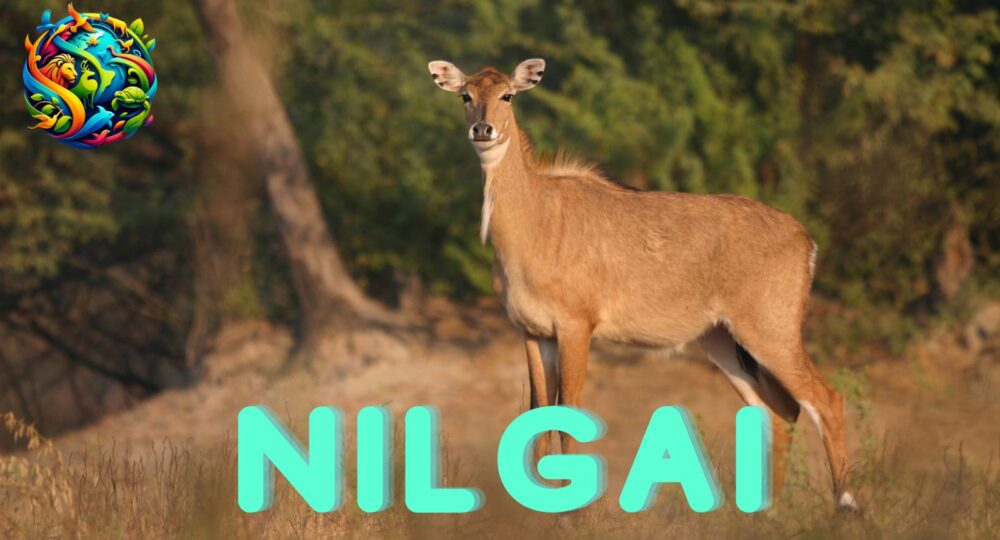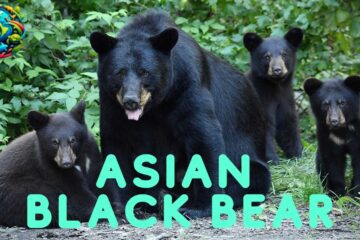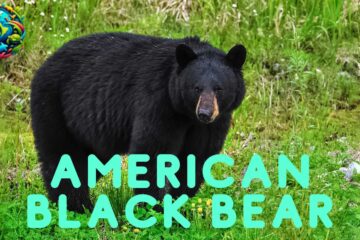
Nilgai: Asia’s Largest Antelope
Nilgai: Asia‘s Largest Antelope
Introduction
The Nilgai, also known as the blue bull (Boselaphus tragocamelus), is the largest antelope native to Asia. With its robust build and distinctive bluish-grey coat in males, the nilgai embodies the resilience and diversity of the Indian subcontinent’s wildlife. This article explores the habitat, diet, appearance, and social behavior of the nilgai, along with the conservation challenges it faces.
Amazing Fact
Their name originates from the Hindi words for “blue” (nil) and “cow” (gai), reflecting the mature males’ unique bluish-grey coloration. Despite their name and bovine appearance, nilgais are more closely related to antelopes and are known for their impressive agility and speed, capable of reaching up to 48 km/h (30 mph) when threatened.
Habitat/Food
They prefer open and semi-open areas, including grasslands, scrublands, and light forests, where they have better visibility to spot predators. They are predominantly found in India, with smaller populations in Pakistan and Nepal. They are grazers and browsers, feeding on grasses, leaves, and fruits, showing a particular fondness for crops, which often brings them into conflict with farmers.
Appearance
Adult male nilgais have a distinctive bluish-grey coat, a white throat bib, and long, thin legs that allow for swift running. They also feature short horns that are straight and conical, measuring up to 24 cm (9.4 in) in length. Females and juveniles are tawny brown and lack horns, making the sexual dimorphism in this species particularly pronounced.
Types/Subspecies of Nilgai
The nilgai is the sole member of the genus Boselaphus, with no recognized subspecies. However, there is some variation in size and coloration across different geographic regions within their range, attributed to environmental factors and genetic diversity within the population.
Where They Are Found
Primarily native to the Indian subcontinent, they have adapted to various habitats across India, extending into eastern Pakistan and parts of Nepal. They have also been introduced to Texas, USA, where they thrive on private hunting ranches, showcasing their adaptability to new environments.
Predator and Threat
In their natural habitat, nilgais face predation from Tigers and Leopards. However, the primary threats to their population come from habitat loss due to agricultural expansion and urban development. In some areas, nilgais are considered agricultural pests, leading to conflicts with humans and subsequent culling efforts.
Mating
Their breeding can occur year-round, with peaks observed during certain seasons in different regions. Males establish territories and compete for access to females through displays of strength and dominance. After a gestation period of about eight to nine months, females give birth to one or two calves, which are hidden in vegetation for the first few weeks of life.
How They Communicate
They communicate through a variety of vocalizations, body postures, and olfactory cues. Alarm calls are used to alert others to the presence of predators, while scent marking plays a crucial role in establishing territories and attracting mates.
Pronunciation in Different Languages
- English: Nilgai or Blue Bull
- Hindi: नीलगाय (Nīlgāy)
- Nepali: नीलगाई (Nīlgā’ī)
- Urdu: نیلگائے (Nīlgā’e)
FAQs
Q: Are they endangered?
A: The nilgai is currently listed as “Least Concern” by the IUCN Red List, thanks to its widespread population and adaptability. However, localized threats require ongoing conservation efforts to ensure their long-term survival.
Q: Can nilgais be domesticated?
A: Despite their peaceful demeanor, they have not been domesticated. Their size, dietary requirements, and need for large roaming areas make them unsuitable for domestic life.
Q: What impact do nilgais have on agriculture?
A: They are known to raid crops, leading to significant agricultural losses in areas where their habitat overlaps with farmland. This has prompted various human-wildlife conflict mitigation efforts, including fencing and controlled culling.
This comprehensive overview of the nilgai offers insight into the life of one of Asia’s most intriguing and resilient antelopes, highlighting the importance of balanced conservation strategies to navigate the challenges of coexistence with human populations.
This Article is Sponsored by FINCTOP






